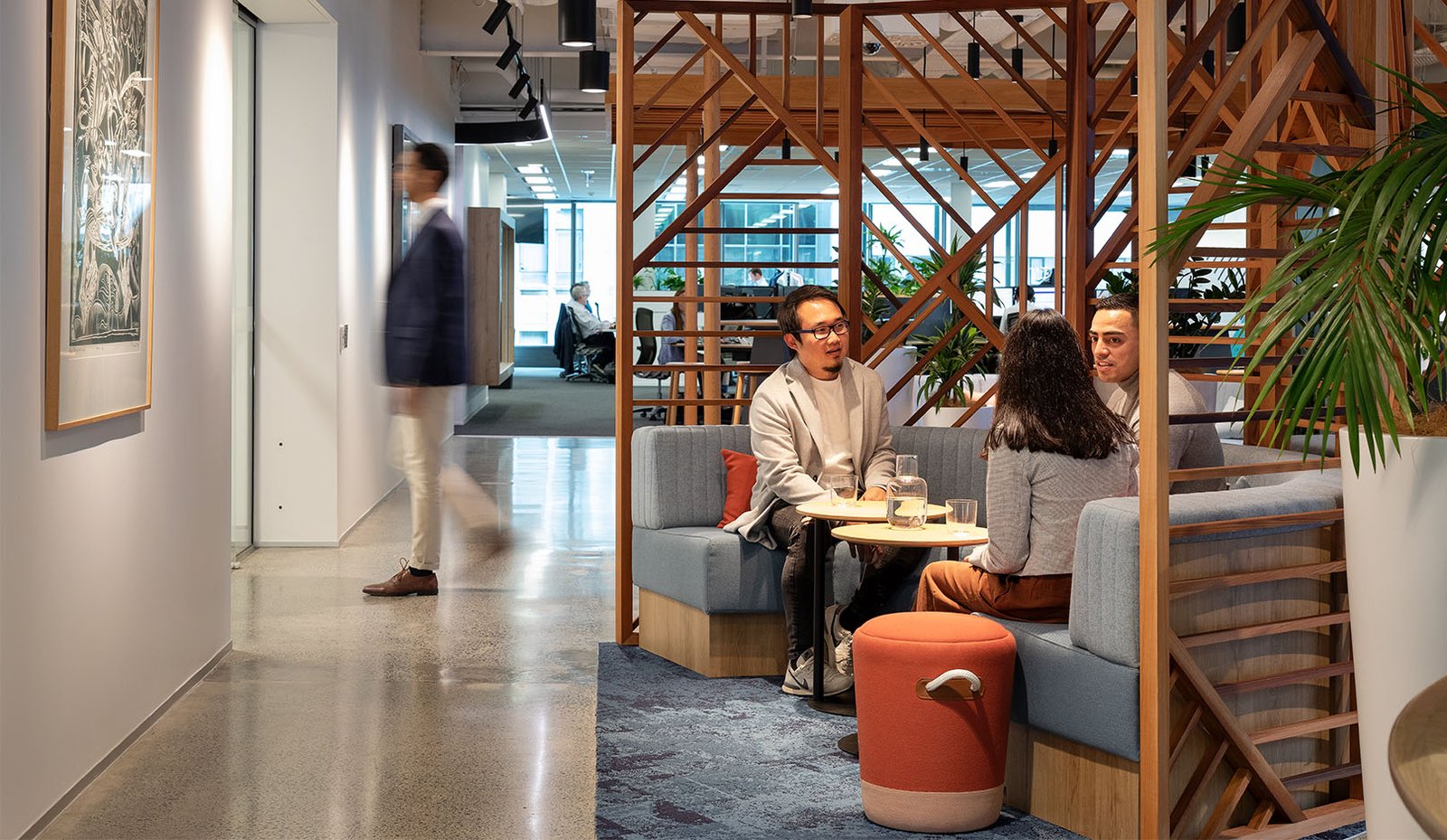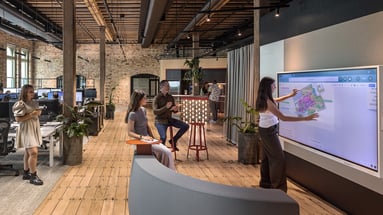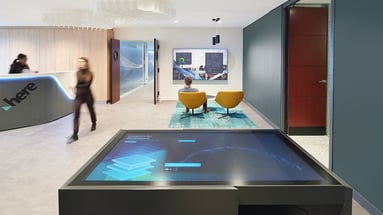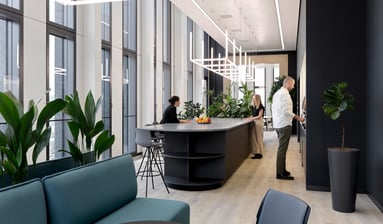How to maximize your workplace strategy’s return on investment

From top-down to team-up: Aligning workforce enablement expectations
In the ever-evolving landscape of today’s workplace, leaders face the dual challenge of cultivating employee engagement and optimizing in-person office time. Our report, Returning for Good, combined the results of a survey of 9,500 employees and 6,650 employers from 17 countries worldwide. It uncovered that 74% of employers grapple with maintaining employee satisfaction and engagement. This begs the question – what factors contribute to this intricate dynamic, and how can leaders navigate this complexity to establish a cohesive office experience that not only satisfies employee needs but also underscores the intrinsic value of purposeful, face-to-face interactions?
Does this resonate? Download our infographic to learn more.
Unmasking the perception paradox
A noticeable rift has surfaced in how employees and employers perceive the office environment. Surprisingly, 58% of employees struggle to execute their core job functions while in the office. This starkly contrasts the belief of 83% of employers who maintain that the office is set up to enable employees to be productive.
According to Gallup’s State of the Global Workplace: 2023 report, burnout is intricately tied to a lack of engagement. Our Returning for Good report found that 59% of employees often feel burnt out. Despite this prevalent issue, a contrasting 69% of employers say that implementing hybrid working has positively impacted the mental wellbeing of their workforce. When we asked why employees felt burnt out, 50% said their workload was too high, and 33% said that they felt the pressure to be “on” when working remotely. These insights emphasize the urgency for leaders to recalibrate their understanding of workplace dynamics, ensuring that initiatives align with the genuine wellbeing of employees, preventing burnout, and fostering an environment where employees can thrive both professionally and personally.
Delve further into the perception paradox in an article from Corporate Real Estate Journal by our Senior Principal of Strategy, Albert De Plazaola.
There’s more to it than just the generational divide
Our research also revealed a disparity between the expectations of employees and employers regarding the frequency of in-person work. 68% of employees expect to return to working in the office at least four days a week again, while 87% of employers anticipate this. This nearly 20% difference flags the potential for misalignment in meeting these expectations and sets the stage for added tension between employees and employers.
Beyond this, there’s also a nuanced generational divide. 70% of employees aged 18-34 expect to be in the office at least four days a week again. In contrast, only 51% of employees over the age of 45 felt the same. This generational gap not only raises questions about company culture, but also poses a threat to crucial elements like learning and mentorship. Younger generations want to come into the office more because they may not have the space for a dedicated office set up, and they see the value in in-person learning. However, the potential absence of older generations in the office jeopardizes the invaluable mentoring, guidance, and coaching that younger generations need and value.
It's also important to recognize that every person has a unique personality and traits that go beyond the “generational profile.” It’s important for leaders to consider equitable design, taking into account neurodiversity requirements, cultural nuances, and employee preferences.
Closing the gap
While employees and employers aren’t aligned on some aspects, they are aligned on others. Namely, they share an understanding that one of the benefits of the office is creativity. They see it as a hub that supports engagement, team bonding, and wellbeing.
While creativity and collaboration are crucial, there’s more to the office. We’re seeing a change post-pandemic that emphasizes the need for more diverse spaces and work settings where individuals can focus, such as phone booth spaces and quiet zones. The number one distractor cited when at work is noise and interruptions.
Both employees and employers see the value in creating a company culture that supports team building, access to leadership, a clear vision, and ensuring everyone feels heard. And they acknowledge that it’s important for the office to have a strong tech infrastructure—reliable internet, a good tech set up, collaborative technology space—and enough meeting rooms and visible leadership.
To close the gap effectively, leaders must take their staff along the journey. This means truly understanding their needs, recognizing differences, and translating those into design applications that influence and shape new behavior—benefiting both staff and leadership. It’s all about creating an environment that genuinely excites people to show up and bring their best and authentic selves to work: a magnetic destination.
To do this leaders must future-proof their workplaces to respond to change by incorporating more flexible solutions and multi-purpose spaces that are adaptable to the ever-evolving needs of the workforce.
Beyond these strategies, it’s about cultivating a culture of trust, connection, and shared values. This transforms a workplace into a space where people aren’t just “clocking in,” but it creates an environment where work gets done efficiently and empowers employees to feel comfortable being themselves.
Get in touch to learn how we've helped clients align their workplace expectations.


